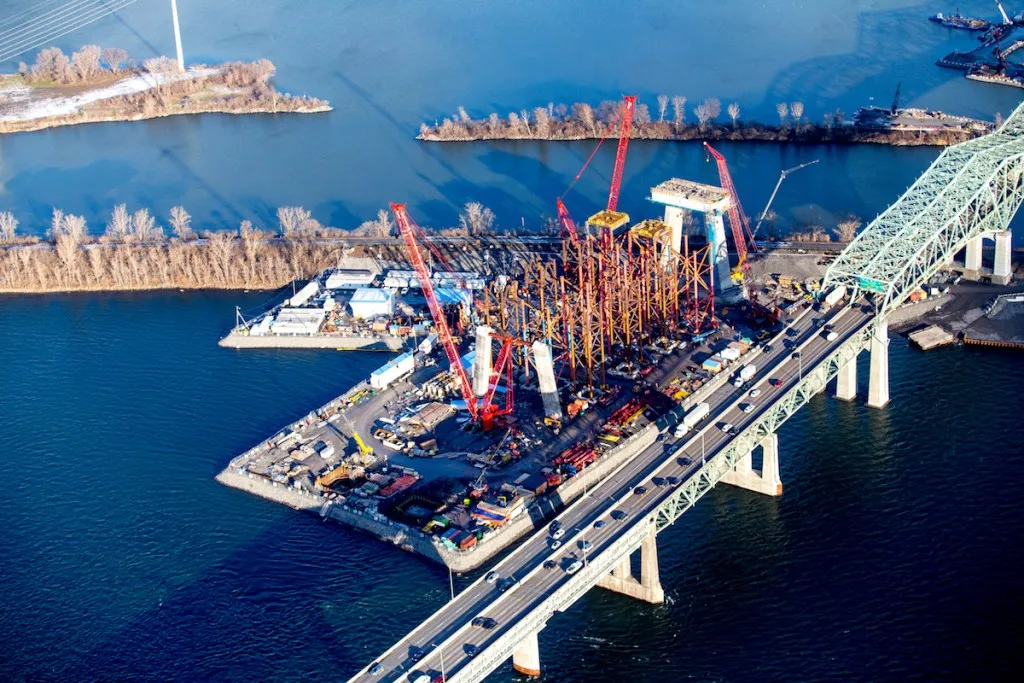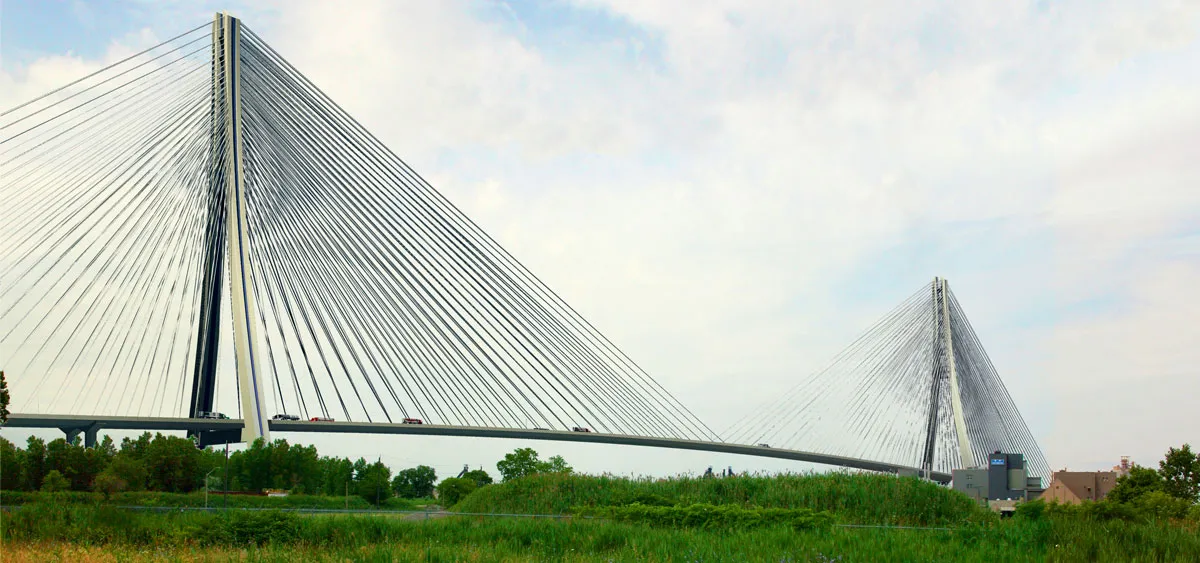
Montreal’s US$3.24 billion Champlain Bridge across the St Lawrence River may not be open on time, according to a report by the independent Auditor General.
The 3.4km cable-stayed bridge has two decks supporting three lanes of highway traffic in each direction. A third, central deck supports a mass transit system and a multi-use path.
The new bridge will replace the nearby 50-year-old Champlain Bridge which has been deteriorating at an alarming rate.
The government signed a contract in 2015 with a private partner, Signature on the Saint Lawrence Group led by Canada-based SNC-Lavalin Group, to deliver the project for just under $3 billion, excluding the government’s project management and land acquisition costs. The contract called for the new bridge to be ready for use by 1 December, according to the Auditor General’s report.
It included a 42-month construction period and a 30-year operation and maintenance period. Other sections of the project were scheduled to come into use by 31 October 2019.
Among the criticisms made by Auditor General was the federal government’s slow decision to invest in a new bridge instead of maintaining the existing one.
“This matters because the delay in decision making entailed avoidable expenditures of more than [$385 million], apart from the economic costs to the greater Montréal area due to the congestion and load limitations on the existing bridge,” the report says.
The report also criticised government’s Infrastructure Canada department for completing its analysis of procurement models for the project two years after it announced the choice of a public-private partnership model.
“If the department had thoroughly analysed the procurement models for the project, it would have found that the public-private partnership could be more expensive than a traditional model.”
The Auditor General of Canada conducts independent audits of federal government projects and operations. It reports to the House of Commons of Canada, not to the government. The audits provide members of Parliament with objective information to help them examine the government's activities and hold it to account.









